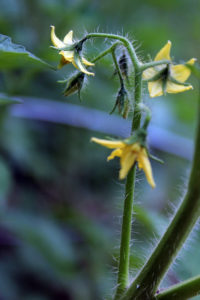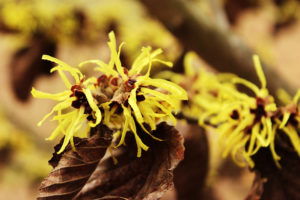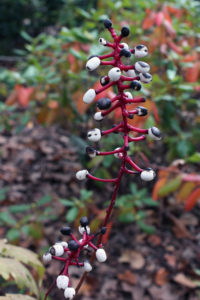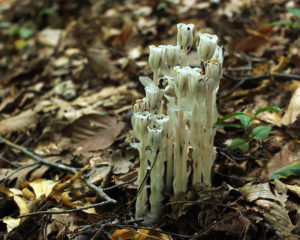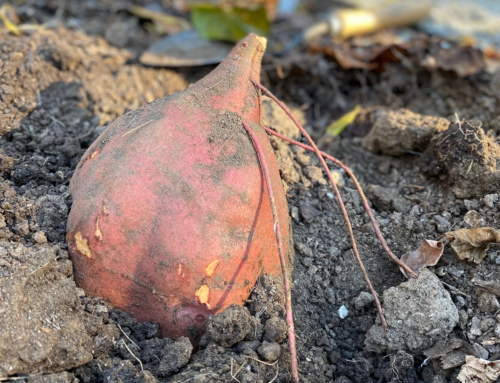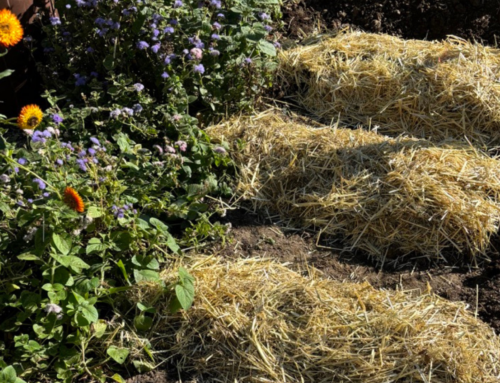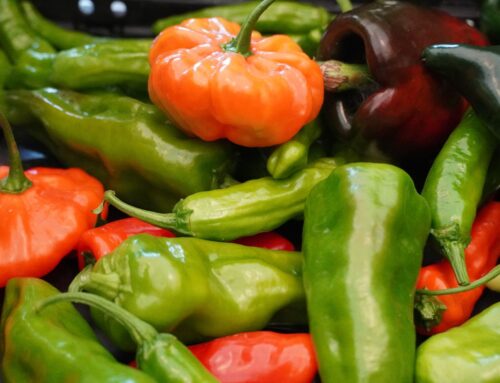By the pricking of my thumbs
Something wicked this way comes
– Shakespeare’s ‘Macbeth’
The history of people and plants is a long one — long, deep, and sometimes dark. In the days when your food and medicine came from the fields and forests around your home, the plants that filled the landscape became important players in your life story. You would know that this hickory gave the most nuts and that paw-paw patch yielded the sweetest fruits. You would know where to find the slippery elm to cure a sore throat, and the cedar to keep insects from your stores. And you would weave those plants into your folklore so that important knowledge about their uses would be sure to be passed down through oral history. These plants would become characters in the story of your life, your community, and the land you call home.
Some of these plant characters carried a dark or mystical intent, and often it was the dosage that determined whether you were brewing a medicine – or a deadly poison. So let’s take a moment this Halloween season to take a look at some of the more sinister or magical meanings and purposes of our familiar garden friends, and consider for a moment what role these plants have played in human history.
No history of “sinister’” plants would be complete without Atropa belladonna, or deadly nightshade. If you were to design and plant a Halloween-themed garden, I would argue that belladonna would be a star specimen. This relative of some of our favorite summer vegetables (tomatoes, peppers, eggplants, and tomatoes), is a member of the Solanaceae or Nightshade family. Unlike its edible cousins, belladonna has long been known for its dangerous properties. This plant is native to Europe and Eurasia, where it was once believed to be the property of the devil. The berries, which are small, black, and glossy, are highly poisonous. In fact, in Shakespeare’s “Macbeth”, it is believed that belladonna was the plant used by Macbeth to poison Duncan’s troops. Talk about being infamous! But as effective as belladonna is as a poison, it was also an important medicinal plant – and in fact can still be found in modern-day hospitals and doctors’ offices. If you’ve ever been to the eye doctor for an eye exam and had your pupils dilated, the eye drops used contain belladonna! And atropine, one of the chemicals found in belladonna, is still used today to treat some varieties of pesticide poisoning.
Belladonna is also a plant that you’re fairly likely to find in a common garden. This strikingly tall perennial has beautiful, deep purple fragrant flowers and is relatively easy to grow. So keep your eye out next time you visit a formal garden – you never know what might be hiding in plain sight.
Note: Atropa belladonna is not cultivated at Tyler Arboretum and we recommend that people refrain from eating wild-harvested plants.
Our next plant is more benevolent, but not less mystical. If you’ve visited Tyler Arboretum in the winter months, we guarantee you’ve seen it – witch hazel (Hamamelis sp). There are many different witch hazel species native to Asia and North America, but let’s take a closer look at one of our common North American natives, Virginia witch hazel, (Hamamelis virginiana).
This might be one of the few plants approved by both the FDA and by real-life witches (just kidding), as you can purchase topical witch hazel ointment in most grocery and drug stores made from this species of witch hazel. This usage is nothing new. Many of the native North American tribes, including the Osage and the Potawatomi, used H. virginiana to treat skin disorders and sore muscles. Witch hazel was also used for more mystical purposes, including as a way to ward off evil, treat broken hearts, and dowse for water. Virginia witch hazel, like all members of the Hamamelidaceae family, bloom in the fall to early spring season, in this case, late November. This perhaps is why this plant carries some of its magical significance. It makes sense that a plant that wards off evil would bloom during some of the darkest days of the year. All around, whether you use it as a skin treatment or to keep your home safe from malevolent spirits, witch hazels are a good plant to have in the landscape. They are very beautiful as well. Mark your calendars now to come to Tyler for a visit this fall and winter — they put on a spectacular seasonal display!
Another plant worth noting is doll’s eyes, also called white baneberry (Actaea pachypoda). This native wildflower of the deep woods is highly toxic; ingesting even a small amount of the white berries can be dangerous. And like many toxic plants, doll’s eyes do have some historic uses as a medicine, particularly as a treatment for pain. But what makes doll’s eyes a good candidate for the Halloween garden comes from its common name, which is inspired by the berry’s striking resemblance to the eyes of china dolls. Talk about creepy! So if you’re looking for a striking and unusual native wildflower to give your garden a ‘haunting’ beauty in fall, doll’s eyes might be the perfect plant to add. Just make sure that no one samples the berries!
Finally, one last plant that has to make this list is Monotropa uniflora, a native flowering perennial that goes by many names including, Indian pipe, ghost plant, corpse plant, death plant, and even convulsion root. Why so many chilling names for one perennial? Well, ghost plant has an interesting adaptation – this plant is non-photosynthetic! It lives as a parasite on the mycorrhizal network of fungus that feeds the roots of trees. Ghost plant taps into the minerals which the fungal network pulls from the soil, as well as the starches and sugars contained in the tree roots. Because the plant needs no chlorophyll, it can grow in the deepest, darkest forest and rise from the leaf litter a pale, ghostly white.
Any plant this spooky looking is bound to have attracted some human attention, and ghost plant was used medicinally by both Native American tribes and early American settlers as a treatment for seizures, which is the source of the common name ‘convulsion root’. At Tyler, you can find ghost plants growing on our Blue Trail, but we ask that you help us conserve this special plant by refraining from harvesting ghost plants and remaining on the trail. Ghost plants need very specific growing conditions and populations of this special plant appear to be shrinking in the wild.
A review of the ghostly, creepy, and spooky characters of the plant world is a fun way to pass a Halloween day. A themed Halloween garden would be an interesting addition to the home landscape – provided guests could be kept safe from any poisonous inhabitants. But to me what is fascinating about these plants is their connection to human history. Our relationship to the plant world is long and deep, stretching back to the very beginnings of human culture. It makes sense that plants that had the power to kill – or to heal – would take on special significance to the people who relied on them. Clues to this significance can be found in many places — folklore about the origins of these plants, planting or cultivation practices, or even their common names. Oftentimes I find that learning about plants can tell us just as much about ourselves as it can about them. So this Halloween, consider taking a stroll through the folk history of your garden – you never know what magical connections you might discover.


